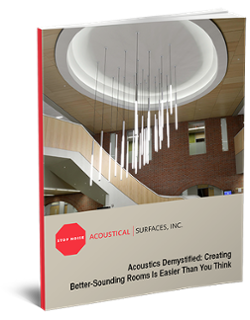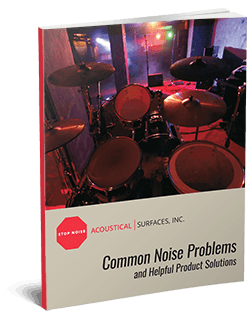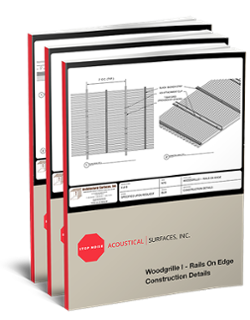Reflected Sound – Reverberation
When a sound source ceases in a space, the sound waves will continue to reflect off the hard wall, floor and ceiling surfaces until it loses enough energy and dies out. The prolongation of the reflected sound is known as reverberation. Reverberation Time (RT) is the number of seconds it takes for the reverberant sound energy to die down to one millionth (or 60dB) of its original value from the instant that the sound signal ceases.
Reverberation is dependent only on the volume of a space and the acoustically absorptive quality of the room’s finishes. Hard surfaced rooms will have a longer reverberation time than rooms finished with sound absorbing materials.
When a sound wave travels outward in all directions and encounters an obstacle such as a wall, floor or ceiling surface the direction of the sound will be changed or reflected. The direction of travel of the reflected sound will be at the same angle as the original sound striking the surface as shown in (FIGURE 10)
The immediate effect of multiple reflections is an increase in the sound intensity caused by the reflections. A listener will hear the direct sound arriving at the ear along with all of the multiple reflections. Thus the combined loudness of the direct sound and the reflected sound will be greater than the direct sound alone.







